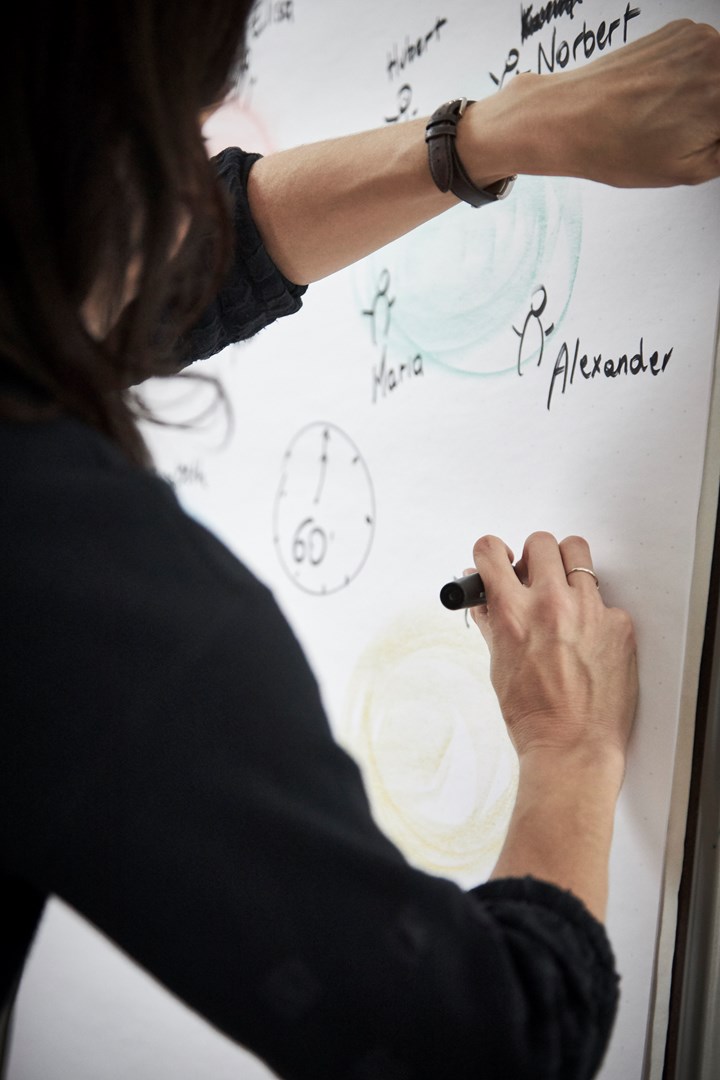
DESIGNING INNOVATIVE BUSINESS MODELS
How do you drive business model innovation across your organization?
THE CHALLENGE
The executive team and family owners of an Austrian industrial holding company decided the 4 group divisions and their business units needed to double profitability. In addition the group wants to grow by creating up to 4 new divisions, one which should be a social business.
OUR APPROACH
Doujak Corporate Development suggested to use the annual group meeting, where the global top 120 managers from the various business units come together, to hold a Future Space; a 2 day large group event to develop ideas for innovating the existing business models and developing ideas for completely new businesses. First we worked with the newly created Strategic Innovation Office to develop a process for the preparation of the Future Space and what would happen with the ideas after the event. The process consisted of four preparation steps.

- The first step was a 2 hour meeting with the division and business line managers. During the meeting we established a common view on the purpose of the Future Space and outlined a framework for describing the existing business models.
- Next these managers, together with key stakeholders from their organisations, described the existing business models, aided by a business model handbook, which we wrote especially for them. These descriptions were sent to the Strategic Innovation Office for a quality check. Individual talks helped to further sharpen the descriptions and the understanding of the business models and the framework we had chosen.
- The business unit managers presented their descriptions to the 1st line group managers in another 2 hour meeting, which was a dry run for the Future Space and helped to further refine the descriptions.
- The fourth preparation step consisted of the managers researching key trends impacting their business and examples of innovative business models, which were used for inspiration during the Future Space.
In parallel we worked with the Strategic Innovation Office on planning the Future Space, define how ideas would be evaluated and how to come to a decision about which ideas to implement.
The Future Space itself consisted of the three steps:
- Describing the history of the company, periods of change and major events that led to the current business model.
- Inspiration from other innovative business models.
- The creation step, guided by our 25 ways to reinvent your business model. After the event division and business unit ideas were fed into the regular strategy and budgeting process for the following year.
After the event ideas for new business and cross-division or business unit ideas were clustered and further described and presented to the executive team, which chose 4 ideas to further pursue. For each idea a distinct project team with experts and key stakeholders under the leadership of the Strategic Innovation Office was created.
Currently the ideas are being evaluated with the Business Model Scorecard we created and we are working with the Office to think about how the ideas can be implemented organisationally and how to drive business model innovation further. One such initiative was a business model innovation handbook including all group business models and those used for the inspiration for each of the 120 participants. Other initiatives include for example innovation meetings with a broader range of employees and an innovation award across the group.

THE RESULTS
- A total of 251 first ideas, which were clustered and further described after the event, resulting in 174 ideas.
- 25 ideas for new businesses.
- 18 ideas for social businesses.
- 11 ideas for businesses and services the holding could offer.
- 120 ideas for further developing the existing divisions and their business.
- Business model innovation has been put on the radar of the organisation and is further driven through the various initiatives.

